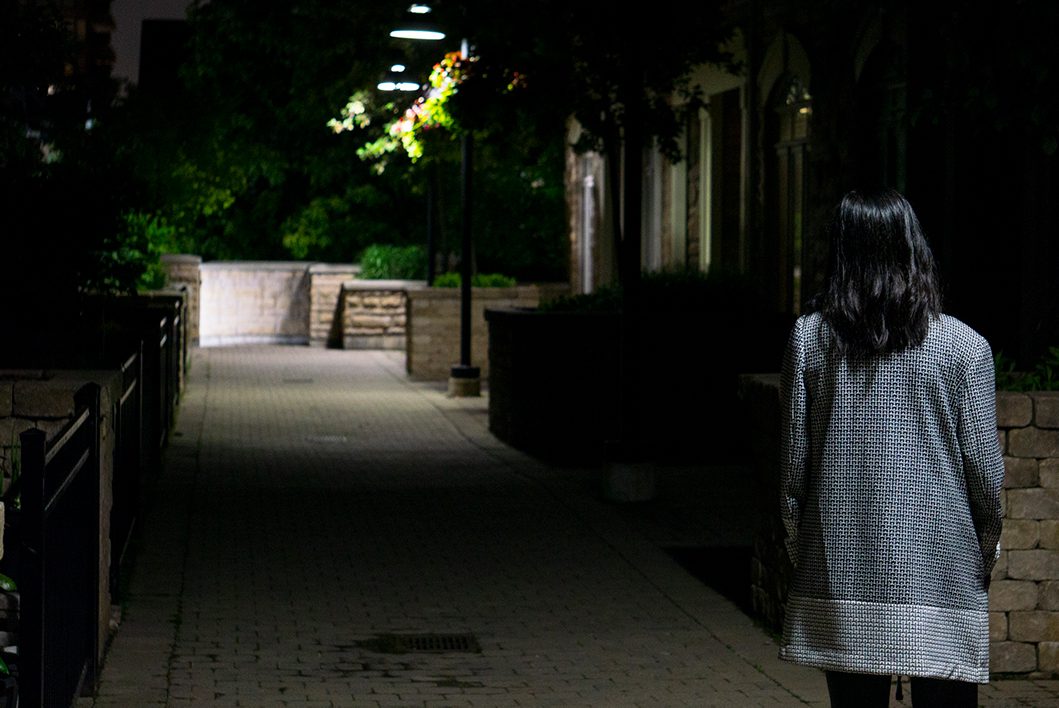If you were to meet Kayo Ito on one of her nights off, you would notice her proclivity for ultra-chic fashion and her meticulously done nails. She’s so polite, soft-spoken and always beaming, it might be a surprise to learn that she had gone to bed at 5 a.m. earlier that day.
“I came to Canada four years ago. I got the chance to come here through the izakaya I work at. The owner sponsored me so I could work there,” says Ito. “They needed someone who can speak Japanese, natively of course.”
Ito says she’s fortunate to have found work she likes and she is currently working on her permanent resident status in Canada.
Prior to coming to Canada, Ito worked as a music promoter and manager in Japan.
(Story continues below)

(Arthur Villasan/Toronto Observer)
“I don’t remember how many days off I got over the four years I worked there. I started at 9 a.m., and I would be up for as long as they needed me to. I couldn’t tell you how many times I took a shower at the office.”
-Kayo Ito
Today, Ito works as a floor manager at Japanhako, an izakaya near Christie Street and Bloor Street West, in Toronto’s Koreatown. It opens at 6 p.m. and closes at 2:30 a.m., though she usually stays past 4 a.m. on a busy night.
An izakaya is a type of Japanese pub for casual drinking and dining. Izakaya chefs pride themselves on making their food presentable and delicious, considering it a necessity for the experience.
“Canadian people can drink with just the drink, but Japanese people love drinks with food,” says Ito. “ I think this is the reason people come here, so that they can drink with good food.”
Traditionally, izakaya chefs are visible over a counter while they cook, which floods the establishment with the smell of the meals they cook. Since it’s customary to order food on a rolling basis, the smell and presentation play a big part over the course of a meal.
“You get to see and interact with the customers … they get to see you busting your ass off and see the passion behind the food-making. The smells get to them first; the charred skewers, the ramen. Then they see high flames and chefs moving fast … that’s why the kitchen is open,” says Hanmin Lee, a former izakaya chef de partie.
Ito says that it can sometimes get difficult when people have had too much to drink.
“Sometimes people get too drunk … they get aggressive, they yell, ‘I don’t want to pay!’ ” she says. “I try my best to ask, as politely as I can, that they calm down … If they don’t, or if they’re like a big guy or tough guy, I have to call the police.”
Thankfully, these moments are rare, she says. The majority of the customers are regulars, and a lot of them are Japanese themselves, or are people with an interest in Japanese culture.
“Izakayas are a big part of Japanese culture,” says Ito. “If you walk (in Japan) you can find an izakaya once every 30 seconds.”
One of the things Ito likes to do on her time off is to get her nails done. She calls her nails her “happiness” and “guilty pleasure.”
When serving at the restaurant, “I usually point at things on the menu, so it’s a nice ice-breaker. Usually girls say ‘Oh, nice nails!’ and I can talk to them about where I get them done,” Ito says.
Ito’s day starts when she wakes up at noon. She heads to a café at 3 p.m. and has her breakfast before heading to work.
Ito says that although the atmosphere of the restaurant is great, working late has some drawbacks. She always feels tired and her social life takes a hit.
“I only have one or two nights off a week, and I try to spend one with my boyfriend and the other to just sleep all day long. I’ve lost so many people (as friends) because of this,” says Ito.
Ito says that because of how different her schedule is from friends that work regular hours, most of her friends now are people who work at and around the izakaya. The staff especially has good relationships with one another, thanks to a 9 p.m. staff meal.
“It’s really good! Sometimes, we have ramen, sushi, Korean food. I can usually eat as much as I want. They care a lot about our health, so they give us meat and veggies together,” says Ito.
Ito usually gets home around 4 a.m. and unwinds by drinking by herself and watching Netflix or YouTube.
“I don’t like seeing the sunrise, I feel like something’s wrong (when I do) … I try to sleep (by) 5 a.m. at maximum,” she says.
Check out more Toronto at 4 a.m. content here!
Online: Toronto Observer
Instagram: @6ix_at_4
Twitter: @6ix_at_4
Facebook: @6ixat4

